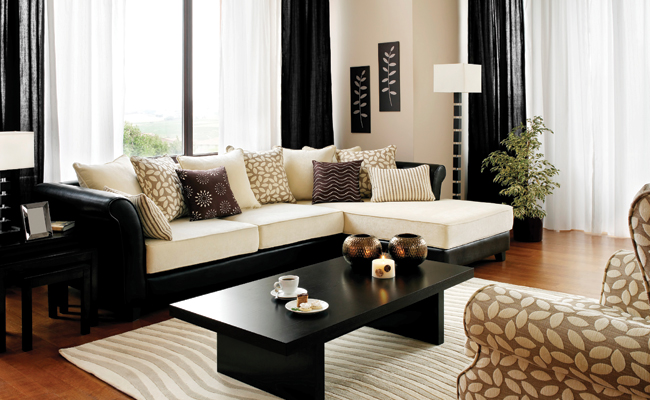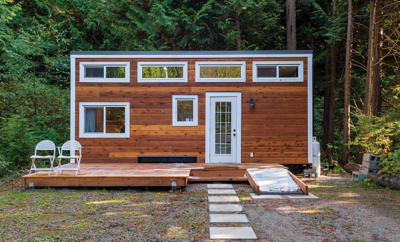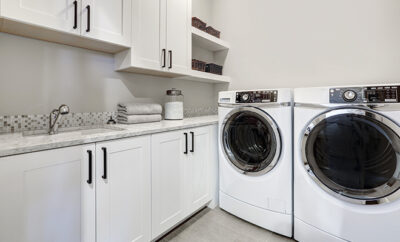
Secrets to Home Staging
One of the first questions potential home sellers ask their real estate agent is, “What do I need to do to get my home ready for sale?”
The answer is often simpler and less costly than most people think. Most houses don’t need expensive upgrades; they just need to be staged so they’ll show at their very best. According to professional stagers like Karen Galler, who runs Showhomes Home Staging in Eden Prairie, Minnesota, the key to effective home staging–making a home look visually appealing to buyers–comes down to the Four D’s. “That means declutter, depersonalize, deodorize and, of course, design,” Galler said. “It takes a little planning and work, but many sellers can do this on their own.”
Declutter
Emphasize square footage and interesting architectural details by opening up rooms. Start packing away and storing non-essentials (including extra furniture) long before the home goes on the market. Clear kitchen counters by removing small appliances; find storage places for cosmetics, toiletries and medicines except when they’re being used. Remove books from bookshelves and decorative items from tabletops; take half the clothes and other items out of closets, making them look bigger.
Once the home is on the market, keep beds neatly made, put away laundry, clean out the refrigerator (buyers will look), keep dishes out of the sink and the counters wiped. “Your home should look like you’re about to have a party. Less is more when it comes to showing a home,” Galler said.
Depersonalize
According to the National Association of Realtors, nearly 90 percent of buyers can’t visualize the potential of a house if it’s filled with other people’s memories. Many sellers find that packing up personal items can be an emotional process, so adopt the mindset of selling a property and not a home. Let buyers imagine themselves living there.
To do this, remove all personal articles such as family photos, refrigerator art, religious and political items, trophies and awards, collectibles and, of course, anything that might be seen as controversial. Try to have rooms set to type by relegating toys to the children’s bedrooms and sports equipment to the workout room.
Deodorize
Buyers will often say that something about a house “just doesn’t smell right.” Sometimes, they mean this literally. Any off odors or anything dirty will discourage buyers and make them think that there’s something seriously wrong with the house. Start by cleaning everything from corner to corner and from top to bottom. Clean out ducts, change out carpets if possible and take down draperies (but not blinds) that are older than three years, which also increases light in the rooms. Then, keep everything pristine.
While a dog bed in the master bedroom or a cat dish by the door may have buyers thinking warm, fuzzy thoughts, cat or dog smell doesn’t. Musty smells from basements, strong scents such as last night’s dinner and the smell of stale tobacco can keep a home on the market far longer and allow it to sell for less. The best option? Hire a professional deodorizing service to get rid of odors throughout the house.
Design
First, fix anything that’s broken. Then, to maximize a first impression, even on a budget, Galler recommends that the seller approach the front entrance with a buyer’s eyes. Does the front door need painting? Do the windows need cleaning or is the trim peeling paint? In the winter, keep the walks clear of snow or leaves and keep the grass trimmed in the summer. These are some of the most important yet least expensive things a seller can do.
It’s also economical to add fresh paint to walls. Colors trends come and go, but an out-of-date color choice can make a home seem that way, too. Right now, gray, taupe and khaki are in style. Choose a paint swatch with several choices and keep within that palette, Galler said.
Even an expensive home can look worn out if bed linens, towels, cupboard and drawer pulls or lamps look old or cheap, so find inexpensive in-style replacements. Use small spots of color, such as a strategically placed vase of flowers, a bright pitcher on the kitchen counter or colorful throw pillows on a couch. But don’t set the table with your finest china or put napkins in red wine glasses. A home should be staged, but it should look like a home, not a showroom.
For homes selling in higher price ranges, Galler recommends hiring a professional stager. “A stager will come in just for one or two days and consult or can help set the entire house so that it shows to its greatest potential. A staged home will sell 78 percent faster than one that hasn’t been staged. Buyers can make the decision to buy or not to buy in just a few seconds, which makes first impressions critical. Hiring a professional can be a really effective investment and it’s so much easier and less stressful for a seller.” HLM
Sources: bankrate.com, realtor.com and showhomes.com.







